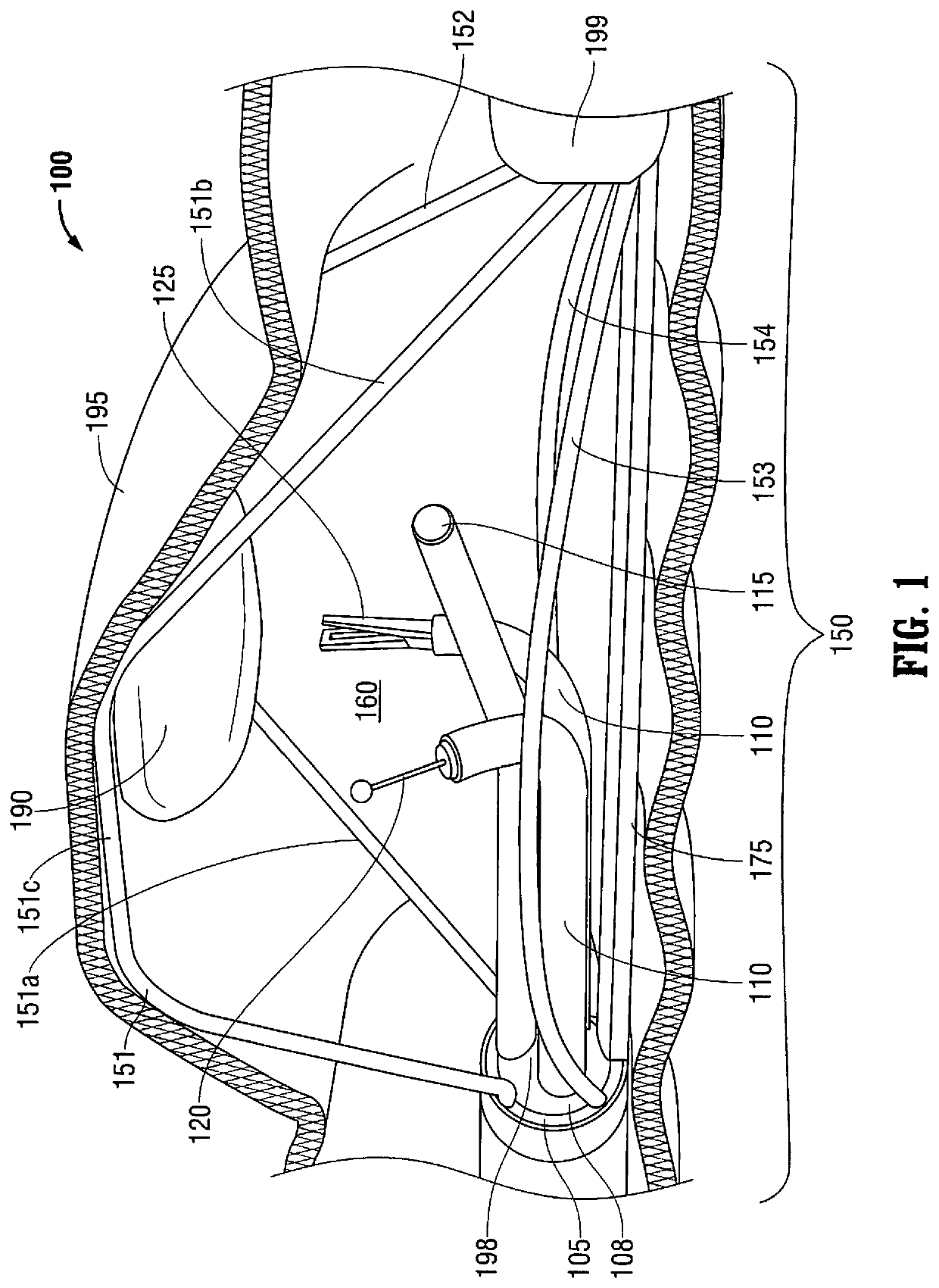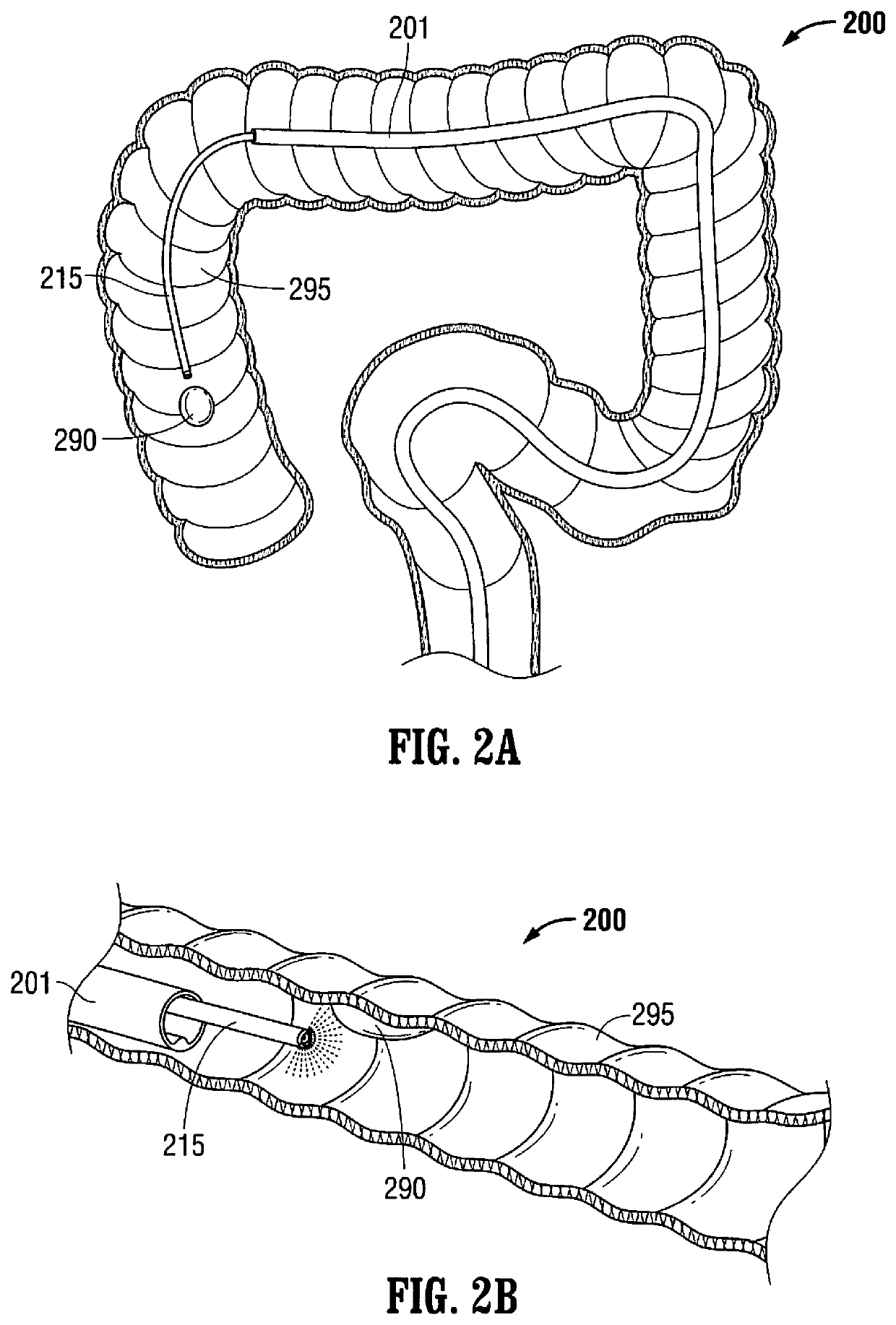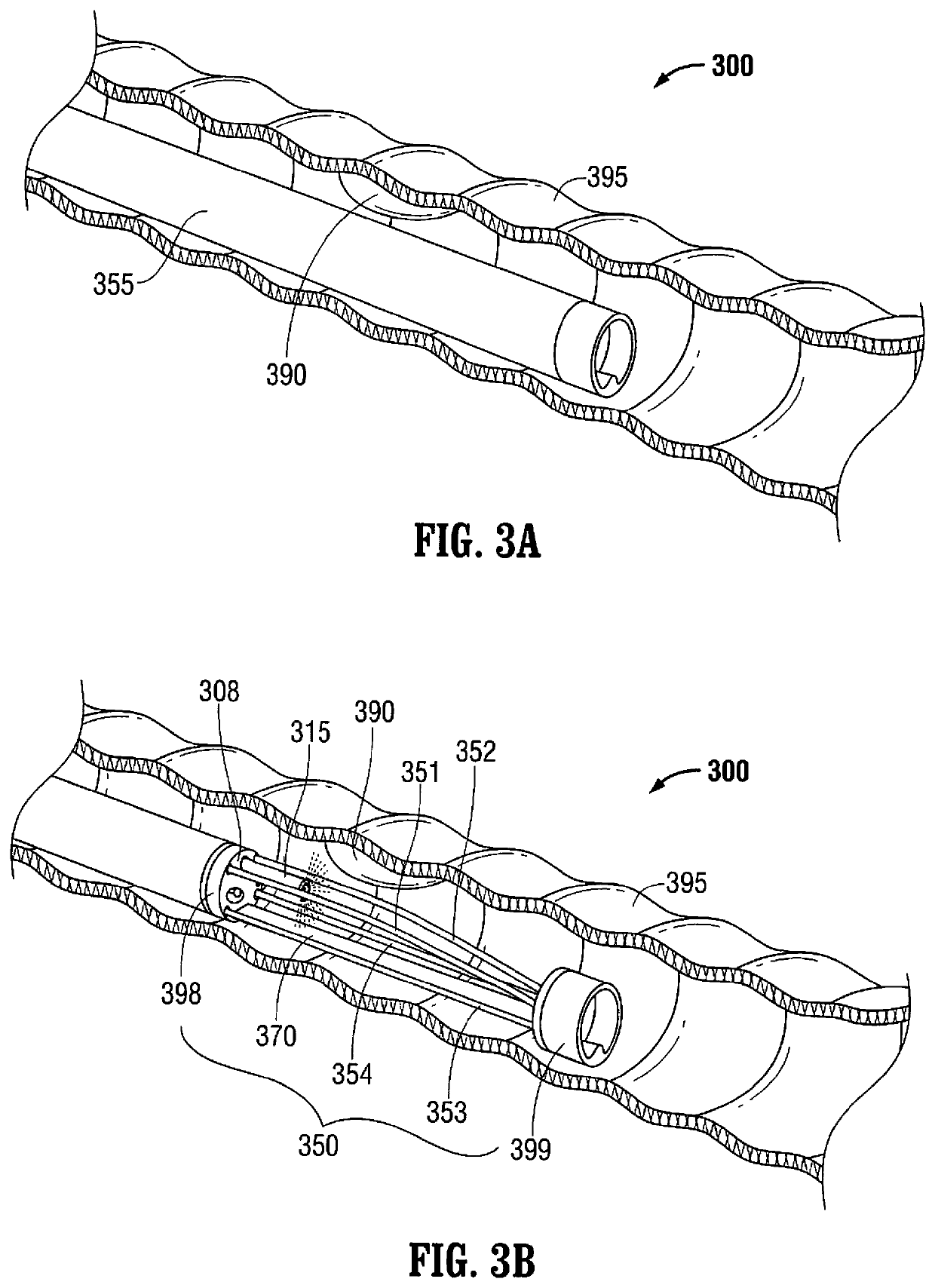Multi-lumen-catheter retractor system for a minimally-invasive, operative gastrointestinal treatment
a multi-lumen catheter, gastrointestinal treatment technology, applied in the field of multi-lumen catheter retractor system for minimally-invasive, operative gastrointestinal treatment, can solve the problems of not only removing the target tissue, but also affixing and reshaping the target tissue, and the bowel movement is considered highly undesirable, so as to facilitate the positioning of the system, improve visualization, and increase the treatment space
- Summary
- Abstract
- Description
- Claims
- Application Information
AI Technical Summary
Benefits of technology
Problems solved by technology
Method used
Image
Examples
Embodiment Construction
[0077]The teachings provided herein are generally directed to improved methods and devices for operatively treating gastrointestinal disorders endoscopically in a stable, yet dynamic operative environment, and in a minimally-invasive manner. The systems, for example, include an endoscopic surgical suite that is created by the systems disclosed herein. The surgical suite can have a reversibly-expandable retractor that expands to provide a stable, operative environment within a subject. In some embodiments, the expansion can be asymmetric around a stabilizer subsystem to maximize space for a tool and an endoscope to each be maneuvered independently to visualize a target tissue and treat the target tissue from outside the patient in a minimally invasive manner. Embodiments taught herein can provide, among other improvements, an increase in distance between tool ports and the target tissue to enhance the independent maneuverability and triangulation of each of the tools with respect to ...
PUM
 Login to View More
Login to View More Abstract
Description
Claims
Application Information
 Login to View More
Login to View More - R&D
- Intellectual Property
- Life Sciences
- Materials
- Tech Scout
- Unparalleled Data Quality
- Higher Quality Content
- 60% Fewer Hallucinations
Browse by: Latest US Patents, China's latest patents, Technical Efficacy Thesaurus, Application Domain, Technology Topic, Popular Technical Reports.
© 2025 PatSnap. All rights reserved.Legal|Privacy policy|Modern Slavery Act Transparency Statement|Sitemap|About US| Contact US: help@patsnap.com



